

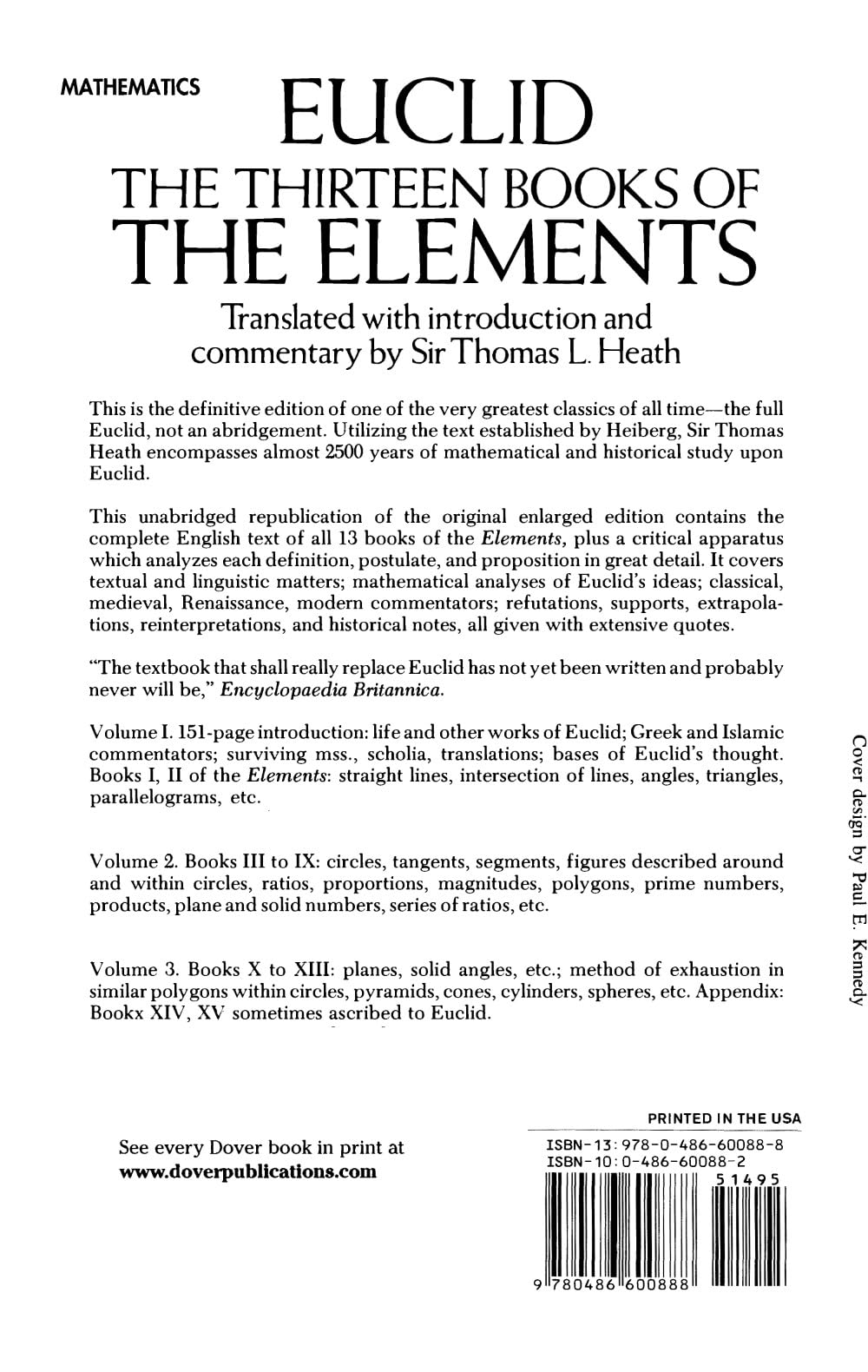
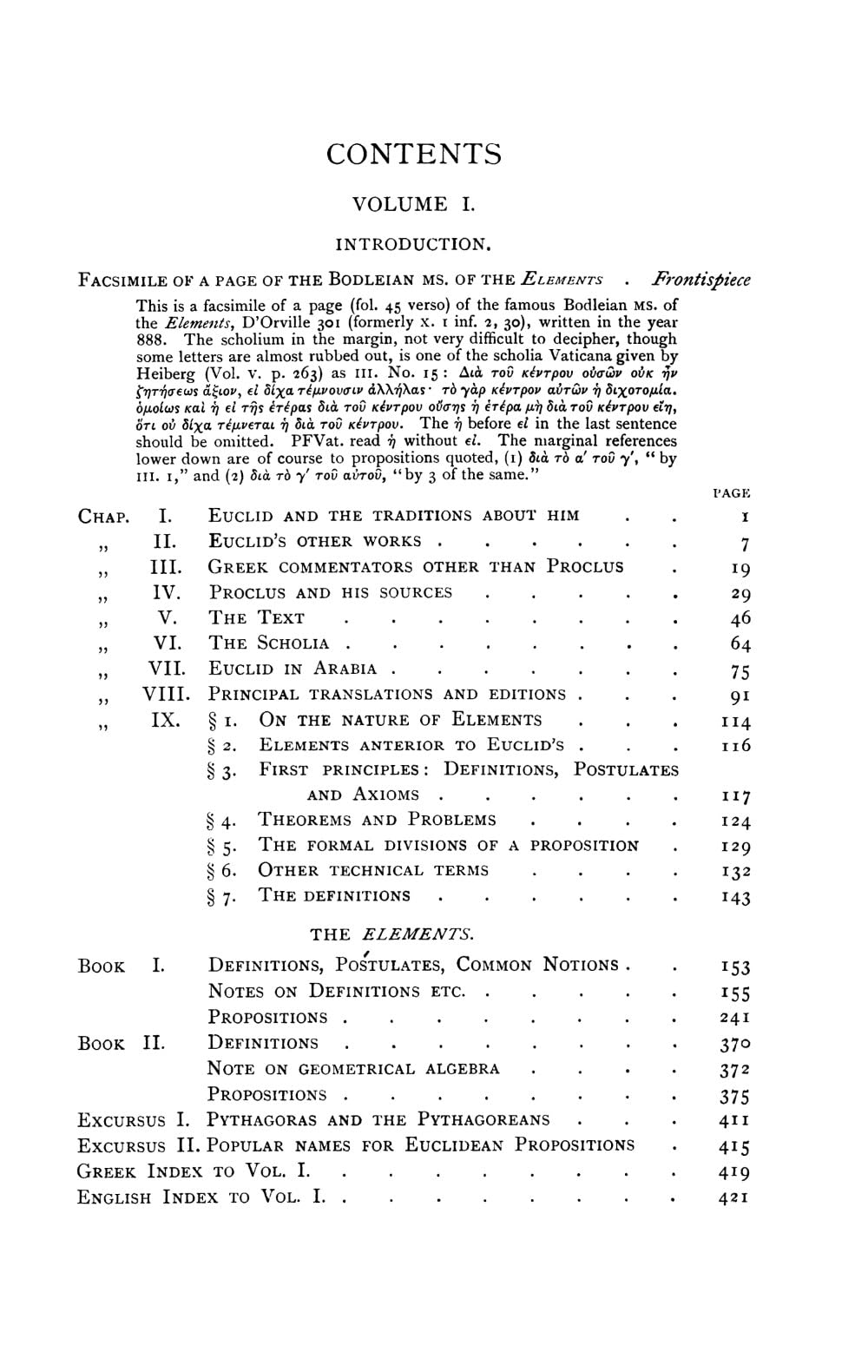
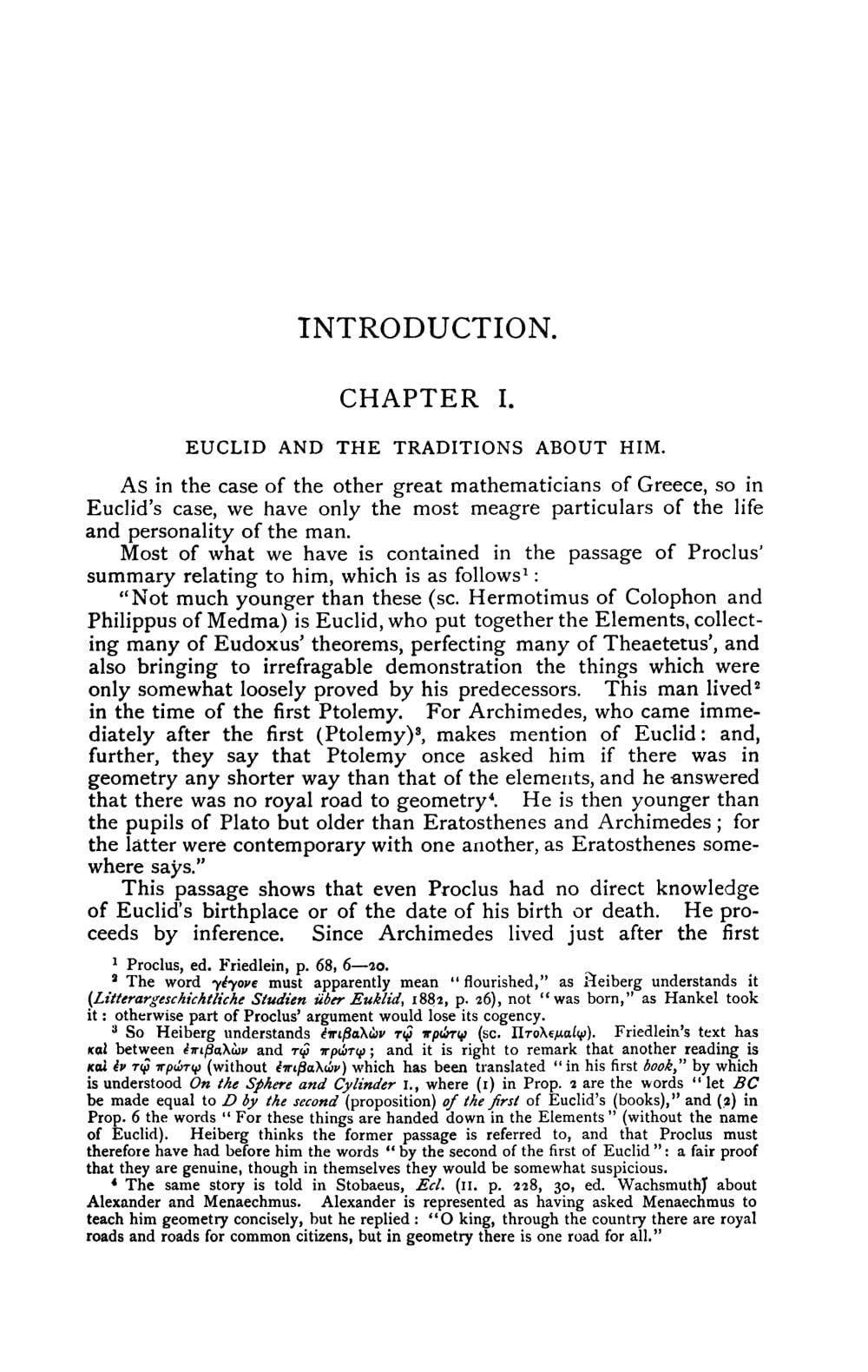
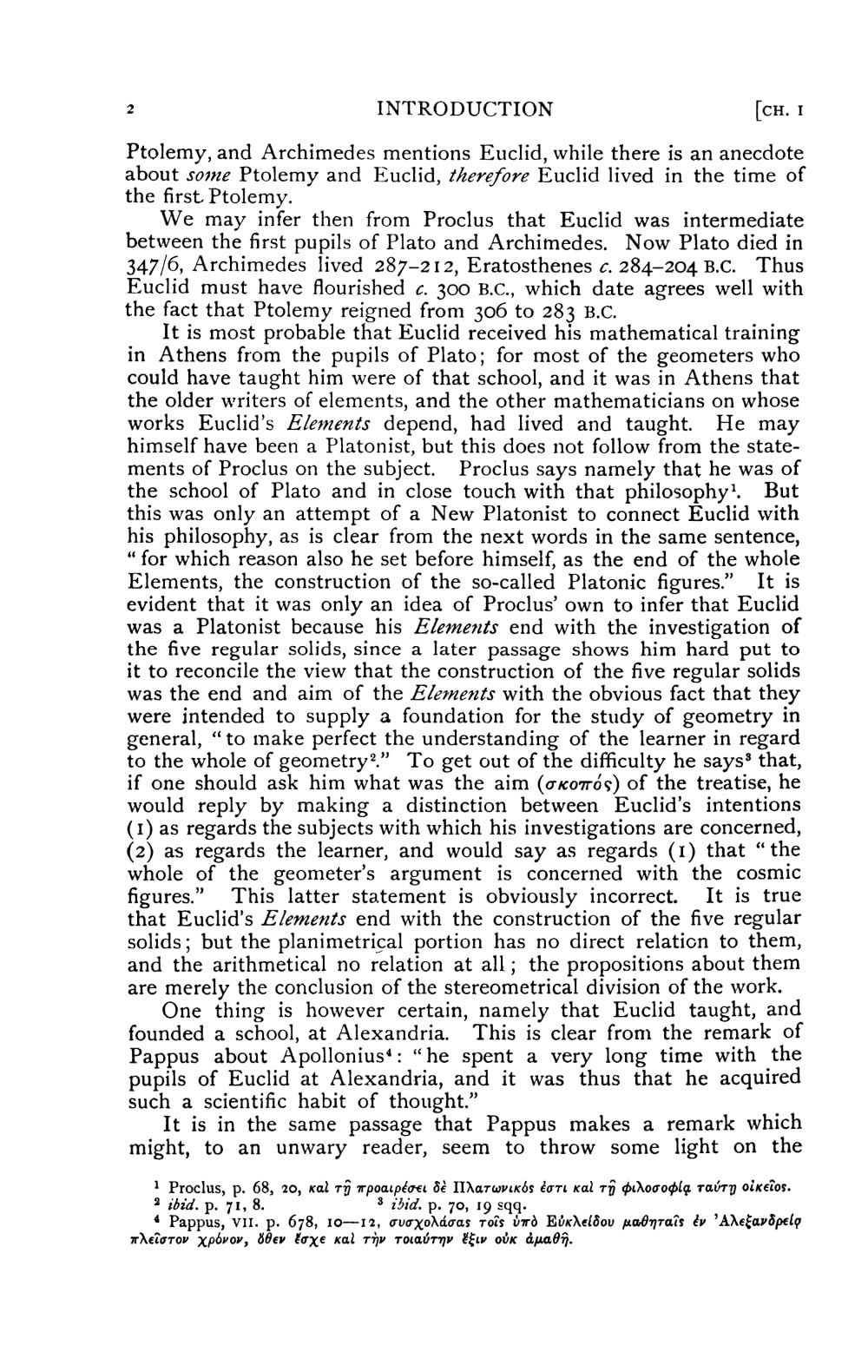
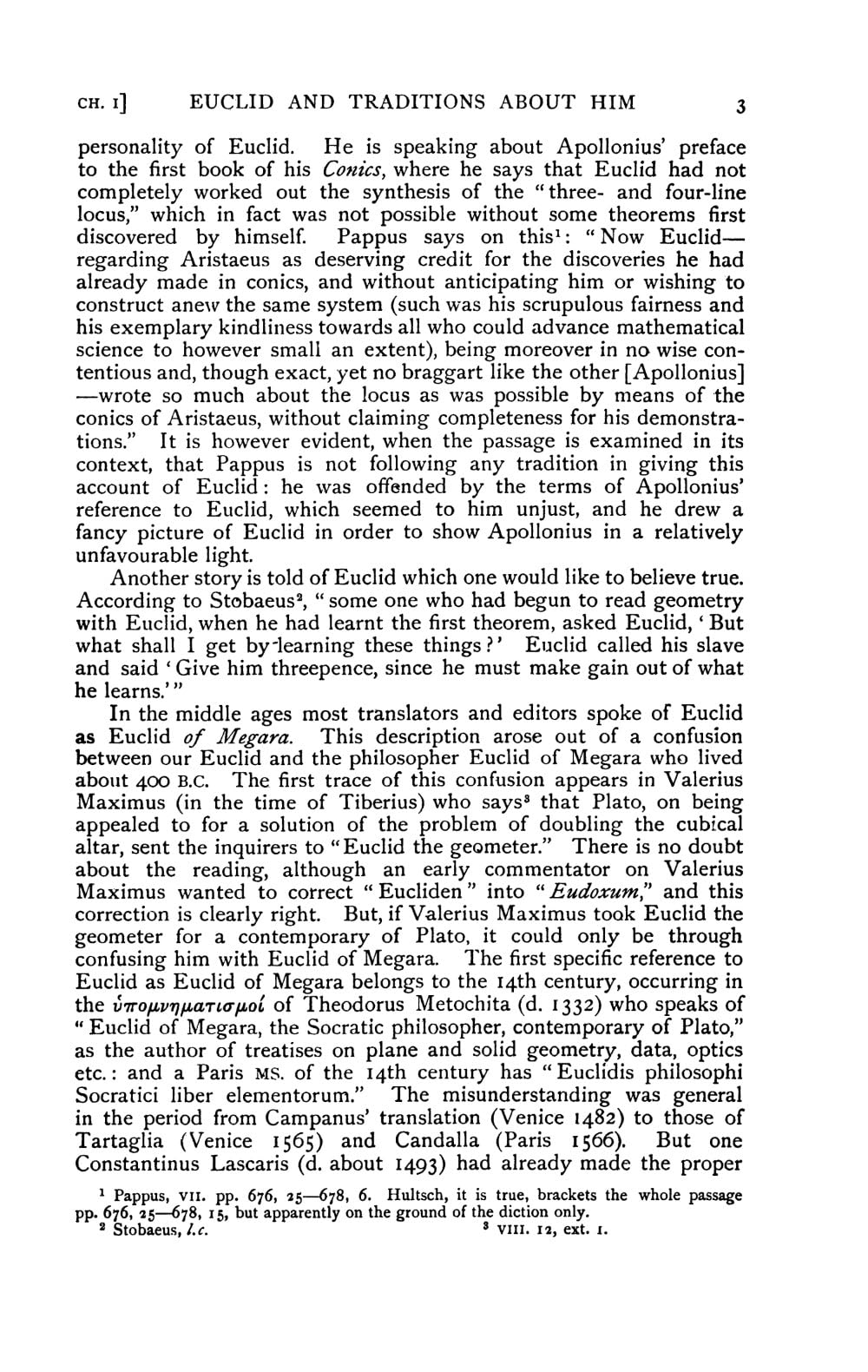

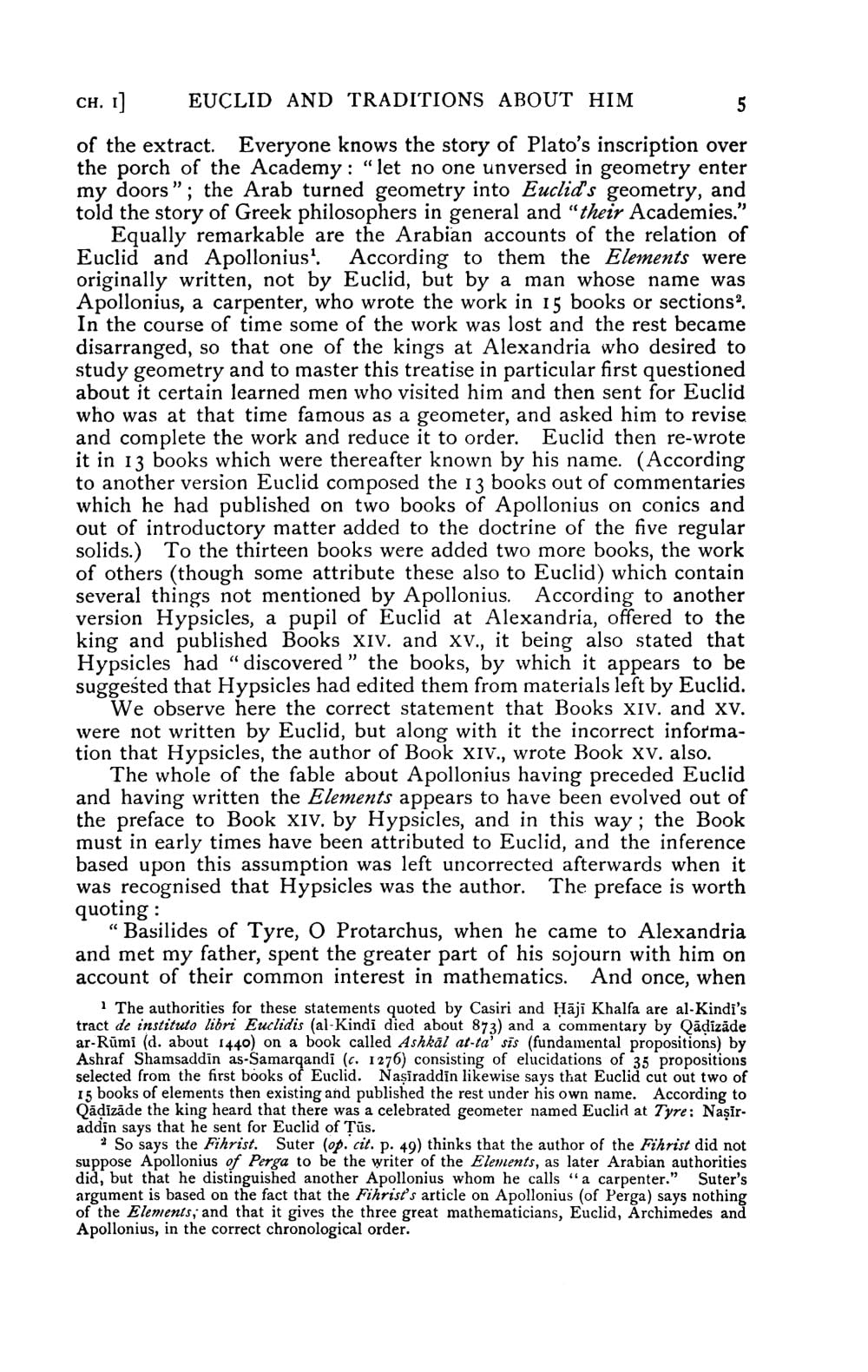
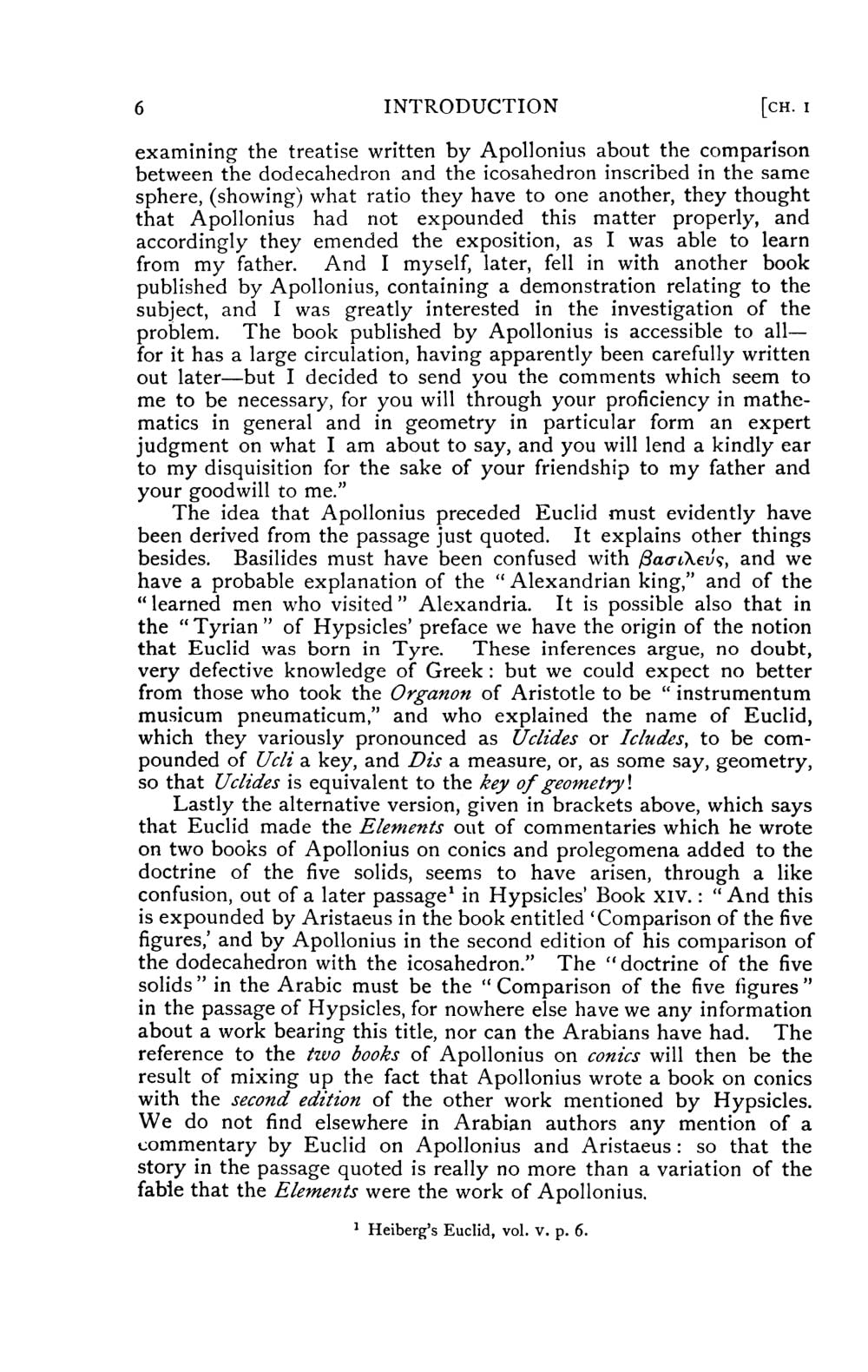
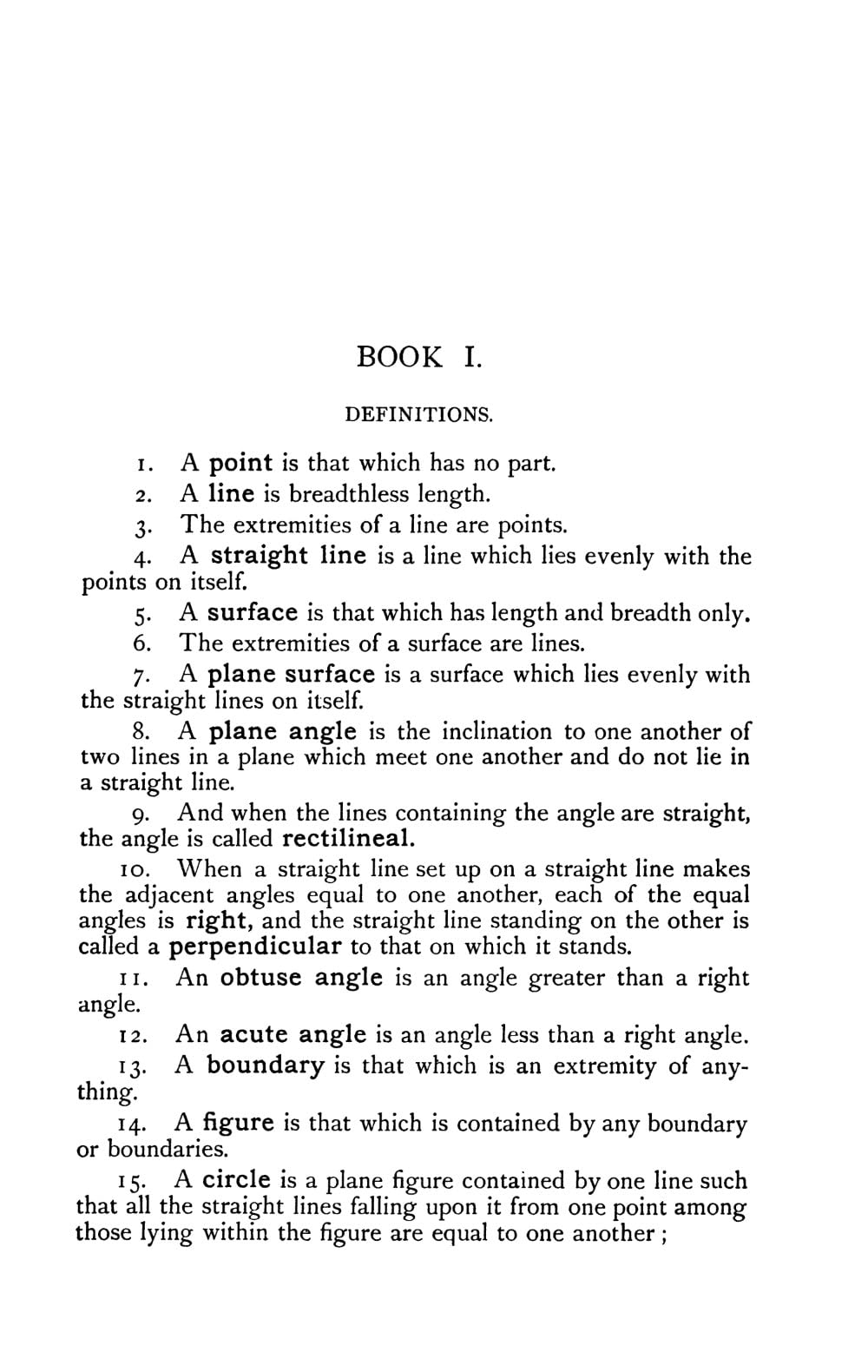
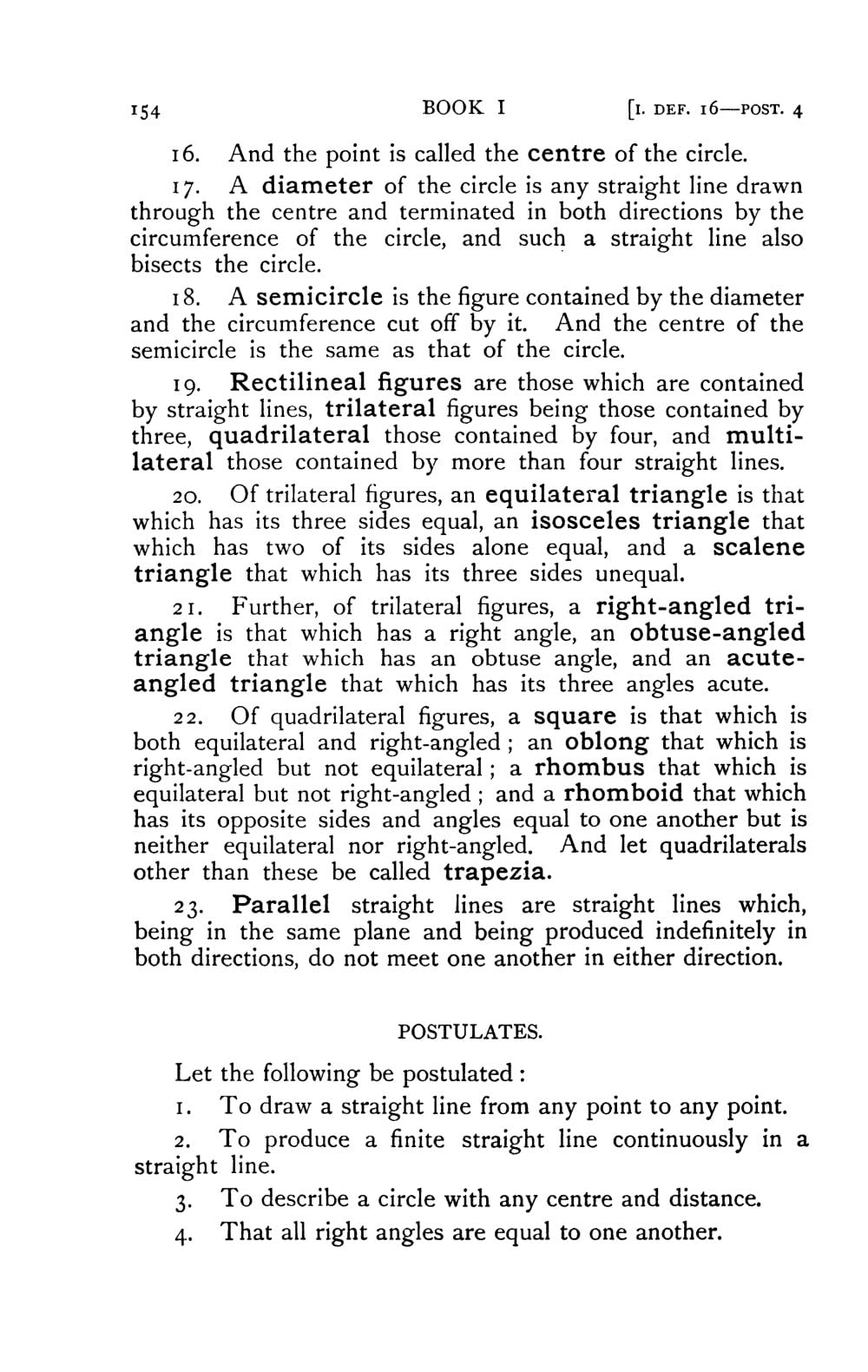
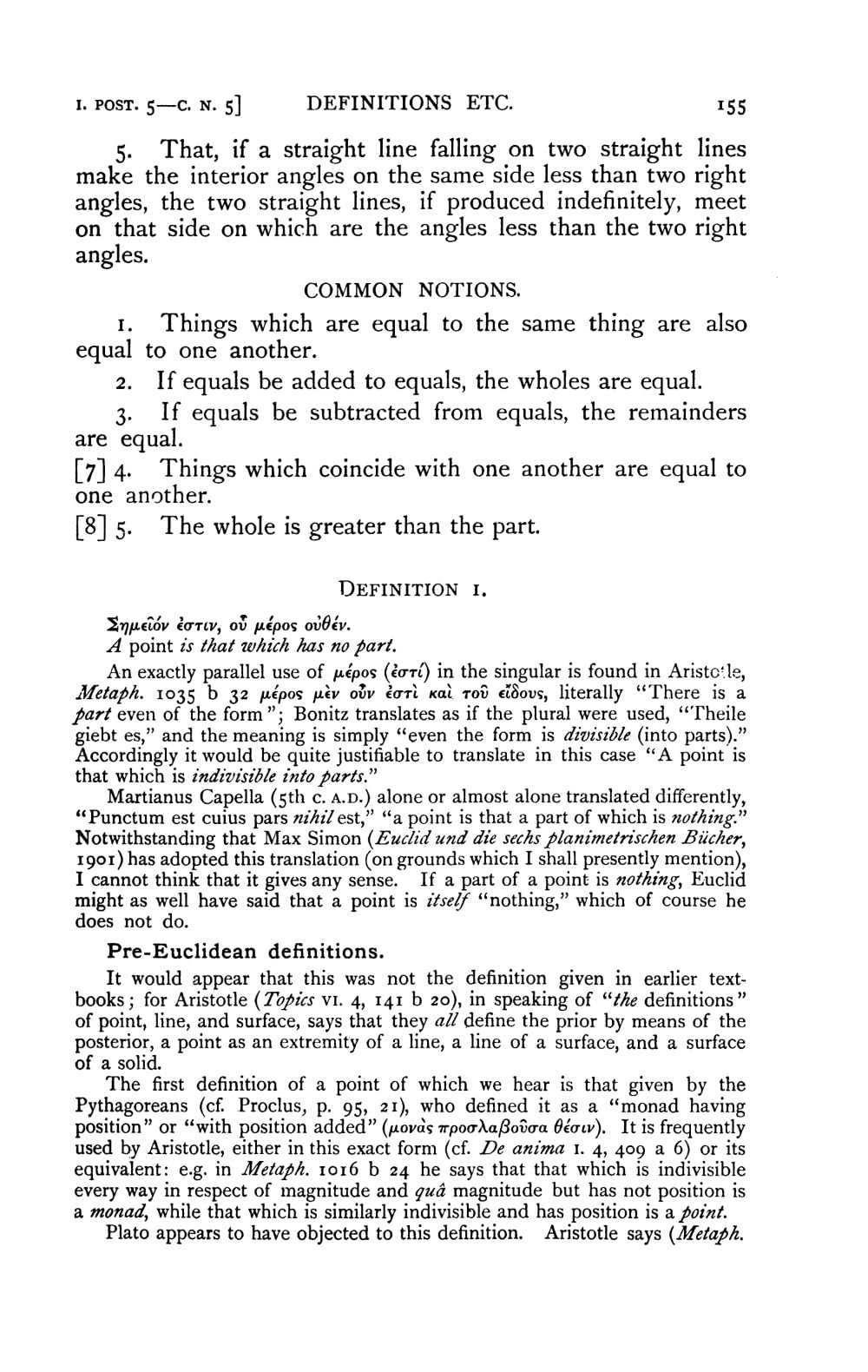
Full description not available
N**A
A classic, but don't try to learn geometry from Euclid
Euclid's "Elements" may very well be the most influential mathematical text in all of history. This fact alone justifies purchasing this book, which is the first of three volumes of Thomas L. Heath's English translation of this classic. This volume contains a lengthy introduction, and the actual mathematics covers plane geometry. Highlights include the construction of the regular 15-gon using straightedge and compass.The actual text of Euclid's work is not particularly long, but this book contains extensive commentary about the history of the Elements, as well as commentary on the relevance of each of the propositions, definitions, and axioms in the book. As such, this book is a good scholarly reference for English readers interested in the historical evolution of Euclidean geometry. For example, there is considerable discussion on the well-known fifth postulate about parallel lines.All this being said, do not try to learn geometry from this book. The content is more suited for readers who already know geometry and want to learn about the historical origins of the subject of geometry. There are many modern books written for readers new to geometry (some good, some bad). It's probably true that Abraham Lincoln studied the Elements as a young lawyer, but there are easier (if not better) ways to learn geometry nowadays. The Elements will be much more enlightening if the reader has a good grasp of the actual mathematics in the book prior to reading it.
J**S
Great Reference
Excellent book to have.
M**.
Great commentary on Euclid
Very interesting work that takes a serious look at geometry building from the ultimate basic assumptions and building from there. I definitely love Thomas L. Heath's commentary. It is daunting to read the entire commentary as it is quite longer than Euclid's book; however, many times the commentary shows the depth of Euclid. Why did Euclid choose the proof he did and not an alternative, and what the alternatives are. I found those comments the most interesting, though he offers many more types of insights. For example he gives a history in the beginning and a discussion about axioms and proofs, with much much more.
Y**N
Ebook proposition 7 in book 1
The image is misplaced in the ebook in proposition 7 of book 1. Print is good.Also in the ebook, the font size of the italic part in proposition 4 of book 1, is incorrect.
C**N
Features of Heath's translation and commentary
I'm not sure that Euclid itself needs another review; its place in mathematics history is well established and other reviewers have done a good job explaining the Elements. I finished working through the "propositions" in the first two books (the contents of this volume) -- I recommend that if you are considering exploring the Elements, that you get out pen and paper and actually work through the steps. You don't necessarily need to draw every single line out using only a straightedge and compass, but without doing the work yourself it can be hard to appreciate how the proofs work.What I mainly want to talk about is this edition specifically. Editions of the Elements are available online for free, and there are other printed editions that contain only the proofs and diagrams, without all the introduction and commentary. So the primary question should be whether the contents of this edition are worth it. In short, I think that if you are interested in Greek philosophy and the history of mathematics, this edition contains a great deal of useful information. If you are mainly interested in the Elements itself, you may do better to go with another edition.Thomas Heath was writing in the early 20th century, and he may have expected his reading audience to be more familiar with Aristotelian philosophy and geometry in general than we are today. His 152-page introduction is divided into 9 chapters. The first chapter is a fairly accessible introduction to Euclid's life and the legends we have about him. Chapters 2-4 are about the work of previous Greek mathematicians and later commentators on Euclid; these chapters are more dense and probably not of interest to the general reader. Chapters 5-8 are a fairly tedious listing of various manuscripts, editions, translations, and adaptations of Euclid -- it's hard to imagine many people being interested in the content of these chapters unless they were specialist researchers. Chapter 9 is worth reading if you are interested in Greek philosophy, and especially if you have some understanding of Aristotle. In ancient Greece, philosophy often dealt with mathematics, and this chapter is a nicely detailed discussion of the philosophical underpinnings of Euclid's techniques, and explanations of terms such as "definition" and "axiom" (in terms of Greek philosophy).The next 90 or so pages is about the definitions, postulates, and "common notions". Once again, these notes deal extensively with Greek philosophy and the philosophy of mathematics in general. For instance, the commentary on definition 1 (the point) discusses Aristotelian and pre-Euclidean definitions, criticism of Euclid's definition by later commentators, and "modern" (i.e. late 19th century) definitions. A lot of this content may not be accessible to someone without philosophy or geometry. Some of this may make more sense if you come back to it later -- for instance, the 20 pages of commentary on the infamous Postulate 5 are a lot easier to appreciate once you've worked through Propositions 29-32 (which use the Postulate).This more or less applies to the commentary on the Propositions as well. A lot of the commentary is devoted to (a) Pre-Euclidean mathematics, (b) criticism of later commentators, and (c) modern treatments of the subject.I suppose that anyone considering The Elements probably has some interest in the history of mathematics, and Heath's information is incredibly detailed and informative. But as I said earlier, unless you have some prior background in Aristotle and geometry in general, it may be difficult to digest.
J**A
Required Reading
This was the book that got me into mathematics. After years of being afraid of the subject, I did a little digging and decided to start here, at the very beginning. I was hooked. I went through the books, proof by proof, constantly being amazed at what I was learning, and how easy it was for me to comprehend. From these books I was able to springboard into many other areas of mathematics, but I owe it all to Euclid.T.L. Heath's translation is quite perfect, and his explanations of the proofs and the historical background he provides make him the absolute authority on the subject. This is the best translation out there, hands down.
A**R
A Blessing for Undergraduate Math History
First of all, this book is a Dover, so you get tons for your dollar!I used this book as a supplement for my math history class. It was very helpful! It shows all of the logic behind Euclid's definitions, postulates, common notions (axioms), and book-one propositions! It goes far beyond proposition-picture-proof. I benefited from the lengthy descriptions and alternate solutions following each proposition!Good little book!
J**N
Obscure, arcane, convoluted, and fascinating
I have been enjoying this book, but it is not for most people. It is difficult to wade through and I would not recommend it for anyone but math historians or someone who would like a traditional perspective on the development of geometry in the third century BCE
Trustpilot
4 days ago
2 months ago